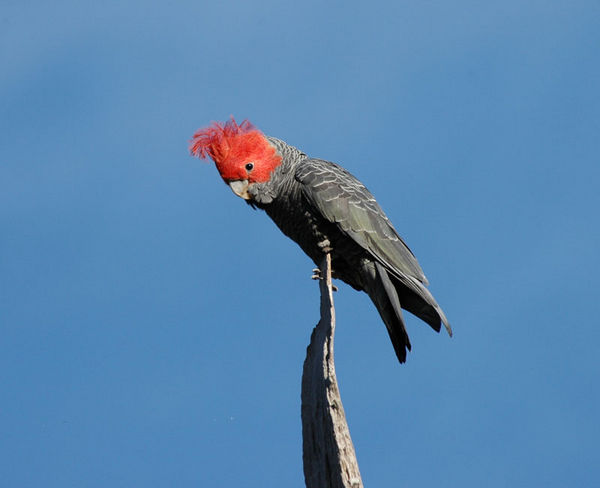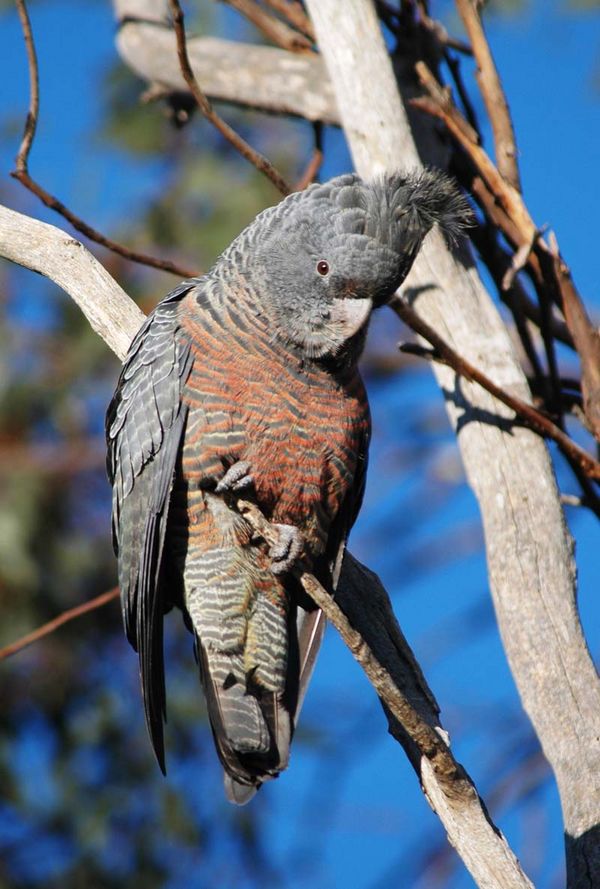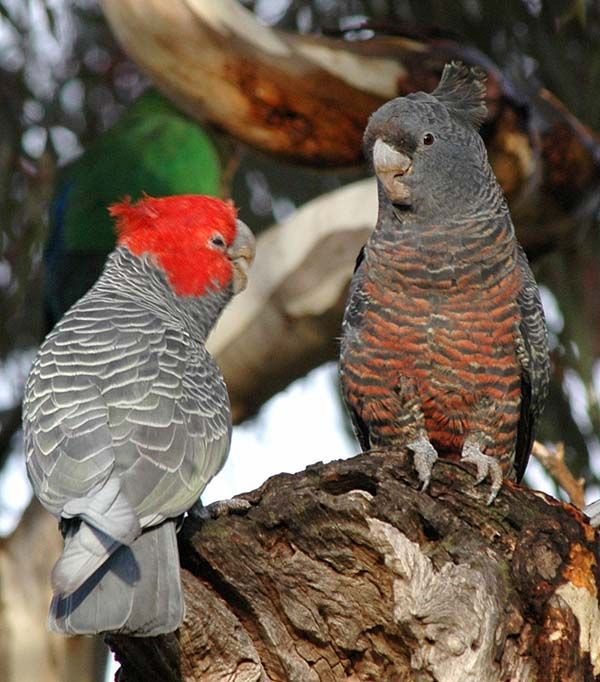|

Male Gang-Gang Cockatoo.
Photograph copyright: Stuart Harris - all rights reserved. Used with permission.
|

Female Gang-Gang Cockatoo.
Photograph copyright: Stuart Harris - all rights reserved. Used with permission.
|

Pair of Gang Gang Gang-Gang Cockatoos.
Photograph copyright: Stuart Harris - all rights reserved. Used with permission.
|
|
|
GANG-GANG COCKATOO FACTS |
Description
The Gang-Gang Cockatoo is a dark grey cockatoo. It has prominent crest. The male has a red head and grey body. The female has grey head and body. Immature birds look like the hen except for some red in the head feathers in young males
Size
33 - 35cm
Habitat
During summer, is found in tall mountain forests and woodlands, with dense shrubby understorey. In winter, Gang-gangs will move to lower altitudes into drier, more open forests and woodlands. Also seen by roadsides and in parks and gardens of urban areas.
Food
eucalyptus seeds and acacia seeds, nuts, berries, plant shoots and roots, grubs. In Canberra in winter it also feeds on Cotoneaster and hawthorn (Crataegus) berries.
Breeding
Nests in hollow of tall tree. 2 -3 white eggs. Both parents share incubation. Parents feed their young for several weeks after fledging and family groups feed together during the breeding season
Range
Victoria and southern NSW

Credits:
Map is from Atlas of Living Australia website at https://biocache.ala.org.au licensed under Creative Commons Attribution 3.0 License.
Classification
| Class: | Aves | | Order: | Psittaciformes | | Family: | Cacatuidae | | Genus: | Callocephalon | | Species: | fimbriatum | | Common Name: | Gang-Gang Cockatoo |
|
|

